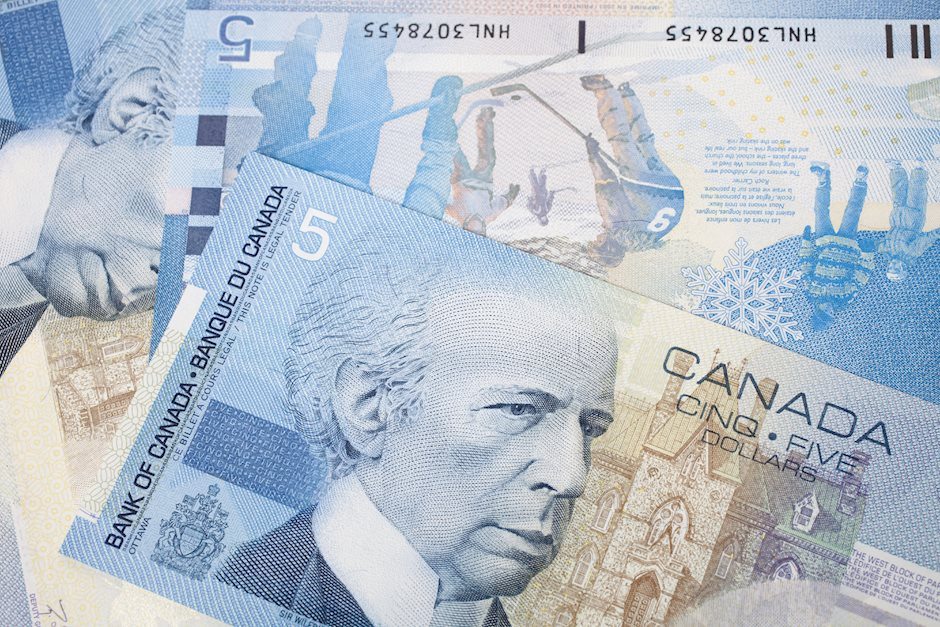USD/CAD hovers near 1.3900, three-month highs amid lower crude Oil prices
- USD/CAD receives support as the commodity-linked CAD struggles due to lower Oil prices.
- Crude Oil prices plunge due to easing fears of a potential all-out war in the Middle East.
- CME FedWatch Tool suggests a 95.8% probability of a 25-basis-point rate cut in November.

USD/CAD holds its position near 1.3890 during the Asian trading hours on Tuesday, close to its three-month high of 1.3908, recorded on Monday. The commodity-linked Canadian Dollar (CAD) faces challenges due to lower Oil prices as Canada is the largest crude exporter to the United States (US).
West Texas Intermediate (WTI) oil price trades around $67.50 at the time of writing. Oil prices have fallen sharply as the limited military operations have alleviated fears of a potential all-out war in the Middle East. Iran’s Foreign Ministry spokesperson, Esmaeil Baghaei, indicated the possibility of using "all available tools" to respond to Israel’s recent attacks on military targets in Iran, according to Reuters.
On Monday, Governor Tiff Macklem provided further details on the Bank of Canada’s (BoC) decision to implement an aggressive interest rate cut last week, explaining that the easing is reasonable given the aggressive hikes in borrowing costs aimed at controlling inflation in recent years. Macklem also noted that the central bank will need to "discover" the neutral rate that neither stimulates nor restricts economic activity, according to Bloomberg News.
The US Dollar (USD) strengthens as positive economic data from last week suggests ongoing resilience in the US economy. This bolsters expectations for nominal interest rate cuts by the Federal Reserve (Fed) in November. The CME FedWatch Tool indicates a 95.8% probability of a 25-basis-point rate cut in November, with no anticipation of a larger 50-basis-point reduction.
Additionally, the US Dollar receives support amid higher US bond yields. This increase is driven by market sentiment increasingly favoring Former President Donald Trump in the upcoming US presidential election and expectations that the Fed may adopt a more cautious stance on future rate cuts. According to polling site FiveThirtyEight, Trump's possibility of winning the US election has increased to 52% compared to 48% for Vice President Kamala Harris.
Canadian Dollar FAQs
The key factors driving the Canadian Dollar (CAD) are the level of interest rates set by the Bank of Canada (BoC), the price of Oil, Canada’s largest export, the health of its economy, inflation and the Trade Balance, which is the difference between the value of Canada’s exports versus its imports. Other factors include market sentiment – whether investors are taking on more risky assets (risk-on) or seeking safe-havens (risk-off) – with risk-on being CAD-positive. As its largest trading partner, the health of the US economy is also a key factor influencing the Canadian Dollar.
The Bank of Canada (BoC) has a significant influence on the Canadian Dollar by setting the level of interest rates that banks can lend to one another. This influences the level of interest rates for everyone. The main goal of the BoC is to maintain inflation at 1-3% by adjusting interest rates up or down. Relatively higher interest rates tend to be positive for the CAD. The Bank of Canada can also use quantitative easing and tightening to influence credit conditions, with the former CAD-negative and the latter CAD-positive.
The price of Oil is a key factor impacting the value of the Canadian Dollar. Petroleum is Canada’s biggest export, so Oil price tends to have an immediate impact on the CAD value. Generally, if Oil price rises CAD also goes up, as aggregate demand for the currency increases. The opposite is the case if the price of Oil falls. Higher Oil prices also tend to result in a greater likelihood of a positive Trade Balance, which is also supportive of the CAD.
While inflation had always traditionally been thought of as a negative factor for a currency since it lowers the value of money, the opposite has actually been the case in modern times with the relaxation of cross-border capital controls. Higher inflation tends to lead central banks to put up interest rates which attracts more capital inflows from global investors seeking a lucrative place to keep their money. This increases demand for the local currency, which in Canada’s case is the Canadian Dollar.
Macroeconomic data releases gauge the health of the economy and can have an impact on the Canadian Dollar. Indicators such as GDP, Manufacturing and Services PMIs, employment, and consumer sentiment surveys can all influence the direction of the CAD. A strong economy is good for the Canadian Dollar. Not only does it attract more foreign investment but it may encourage the Bank of Canada to put up interest rates, leading to a stronger currency. If economic data is weak, however, the CAD is likely to fall.
Author

Akhtar Faruqui
FXStreet
Akhtar Faruqui is a Forex Analyst based in New Delhi, India. With a keen eye for market trends and a passion for dissecting complex financial dynamics, he is dedicated to delivering accurate and insightful Forex news and analysis.

















